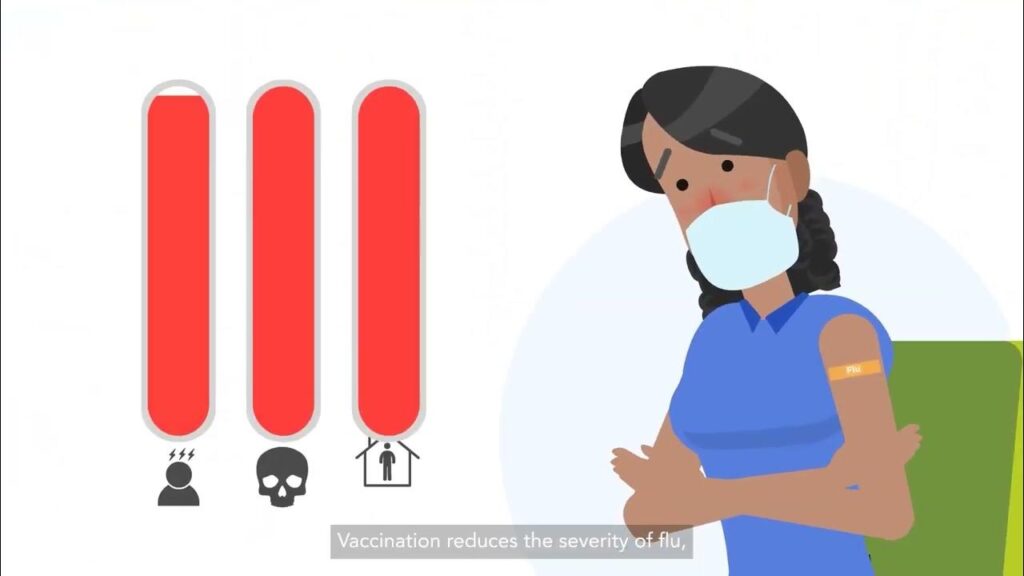Vaccination, a powerful tool in the realm of public health, has saved countless lives throughout history.
From eradicating deadly diseases to curbing the spread of infections, vaccines stand as one of the most remarkable achievements in medicine.
In this comprehensive guide, I will go into the vital role that vaccination plays in preventing diseases and safeguarding global health.
Throughout the following sections, we will explore the science behind vaccines, their profound impact on human history, and the critical importance they continue to hold in the contemporary world.
By the end of this article, you will have a deeper understanding of why vaccination is not only a personal choice but a collective responsibility in the fight against infectious diseases.
Join me on a journey through the history, science, and significance of vaccination, as I unravel the layers of knowledge surrounding this invaluable medical intervention.

Understanding Vaccines
Vaccines are remarkable creations of science, designed to protect us from a wide array of infectious diseases.
In this section, I’ll delve into the intricacies of vaccines, exploring what they are, how they work, and the different types that exist.
A. What are vaccines?
Vaccines are biologically active substances engineered to stimulate our immune system without causing the disease they protect against.
They are typically composed of one or more of the following elements:
- Antigens: These are pieces of the pathogen (virus, bacteria, or other microorganisms) that trigger an immune response.
- Adjuvants: Substances added to vaccines to enhance the body’s immune response to antigens.
- Preservatives and stabilizers: Ingredients that ensure the vaccine remains safe and effective.
- Traces of the pathogen: In some vaccines, tiny amounts of the weakened or inactivated pathogen are included to train the immune system.
B. How do vaccines work?
Vaccines work by mimicking an actual infection, thereby training the immune system to recognize and combat the specific pathogen.
Here’s how the process unfolds:
- Introduction of antigens: When a vaccine is administered, it introduces harmless antigens from the pathogen into the body.
- Immune response: The immune system recognizes these antigens as foreign invaders and mounts a defense. This involves the production of antibodies and the activation of immune cells.
- Memory cells: After the immune response, the body retains “memory cells” that remember the pathogen. This memory allows the immune system to respond rapidly if the person is exposed to the actual pathogen in the future.
- Protection: Should the person encounter the real pathogen, their immune system recognizes it and fights it off effectively, preventing illness or reducing its severity.
C. Types of vaccines
Vaccines come in various forms, each designed to combat different types of pathogens and diseases.
Here are the main categories of vaccines:
- Live attenuated vaccines: These contain weakened forms of the live pathogen, such as the measles, mumps, and rubella (MMR) vaccine.
- Inactivated vaccines: These vaccines use pathogens that have been killed, such as the polio vaccine.
- Subunit, recombinant, and conjugate vaccines: These vaccines use specific components of the pathogen, such as proteins, to stimulate an immune response. Examples include the hepatitis B vaccine.
- mRNA vaccines: These revolutionary vaccines, like the COVID-19 vaccines, use a small piece of the pathogen’s genetic material (mRNA) to instruct cells to produce a harmless piece of the pathogen, triggering an immune response.
- DNA vaccines: Still in experimental stages, DNA vaccines involve the injection of a small, circular piece of DNA that instructs cells to produce antigens, similar to mRNA vaccines.
Understanding the different types of vaccines is crucial for appreciating the flexibility and effectiveness of vaccination in preventing various diseases.
In the following sections, I’ll explore the impact of vaccination on public health and its role in eradicating and controlling infectious diseases.
The Impact of Vaccination
Vaccination has left an indelible mark on human history, reshaping societies and saving lives.
In this section, I’ll delve into the profound impact that vaccination has had on public health and explore the consequences of preventable diseases.
A. Historical successes of vaccination
1. Eradication of smallpox
- Smallpox, once a devastating disease, became the first human disease to be eradicated globally through vaccination.
- Explore the timeline and efforts that led to the eradication of smallpox.
2. Near-eradication of polio
- The global campaign against polio and the role of vaccines in reducing its prevalence.
- Discuss the challenges that remain in achieving complete eradication.
B. Preventable diseases and their consequences
1. Measles, mumps, and rubella
- Examine the resurgence of these diseases due to vaccine hesitancy.
- Highlight the potential complications of these once-common childhood illnesses.
2. Influenza
- The seasonal flu and the importance of annual vaccination.
- The economic burden and health risks associated with flu outbreaks.
3. HPV and cervical cancer
- Discuss the link between the human papillomavirus (HPV) and cervical cancer.
- The impact of the HPV vaccine on reducing cancer rates.
C. Economic benefits of vaccination
1. Reduced healthcare costs
- Analyze how vaccination lowers the financial burden on healthcare systems.
- Explore case studies demonstrating cost savings from vaccination programs.
2. Increased productivity
- Discuss how fewer sick days and a healthier workforce result from vaccination.
- Highlight the societal and economic gains linked to vaccination-induced productivity.
By examining the historical achievements and ongoing challenges in vaccination, we gain a clearer understanding of how these interventions have shaped the health and well-being of communities worldwide.
In the next section, we’ll explore the concept of herd immunity and its role in furthering the impact of vaccines.
Herd Immunity
Herd immunity is a concept deeply intertwined with vaccination and plays a crucial role in preventing the spread of infectious diseases within a community.
In this section, I’ll explore what herd immunity is, how it works, and its significance in public health.
A. Definition and explanation of herd immunity
- Definition: Herd immunity, also known as community immunity, is a state where a sufficient percentage of a population is immune to a specific infectious disease, either through vaccination or previous infections. This reduces the likelihood of disease transmission within the community.
- The threshold: Discuss the critical threshold of immunity required to achieve herd immunity for various diseases.
- The role of unvaccinated individuals: Explain how unvaccinated individuals, including those who cannot receive vaccines for medical reasons, benefit from herd immunity.
B. The role of vaccination in achieving herd immunity
- Vaccination as a key strategy: Highlight how widespread vaccination is the most effective way to reach the herd immunity threshold.
- Disease control: Discuss how achieving herd immunity can effectively control or even eliminate certain diseases, even if the pathogen remains present elsewhere.
- Protection of vulnerable populations: Emphasize how herd immunity safeguards individuals who are more susceptible to infections, such as the immunocompromised and infants.
C. Examples of diseases controlled through herd immunity
1. Measles outbreaks
- Investigate instances where declining vaccination rates have led to measles outbreaks.
- Show how herd immunity can act as a protective shield against such outbreaks.
2. COVID-19 pandemic
- Discuss the global efforts to reach herd immunity against COVID-19 through vaccination.
- Examine the challenges and successes in achieving this goal.
Understanding the concept of herd immunity not only underscores the importance of individual vaccination but also highlights the collective responsibility in safeguarding public health.
In the next section, I’ll address common misconceptions about vaccines and vaccine safety to dispel any doubts that may hinder vaccination efforts.
Vaccine Safety and Myths
Ensuring the safety of vaccines is paramount to their success in preventing diseases.
In this section,I’ll address common myths and concerns surrounding vaccines, providing evidence-based information to dispel misinformation.
A. Addressing common vaccine myths
1. Autism and vaccines
- Debunking the myth: Present scientific studies and expert consensus that refute the alleged link between vaccines, particularly the MMR vaccine, and autism.
- Origins of the myth: Explore the history of this myth and how it gained traction.
2. Thimerosal concerns
- The role of thimerosal: Explain what thimerosal is and its presence in some vaccines as a preservative.
- Safety assessments: Discuss the extensive research demonstrating the safety of thimerosal in vaccines.
B. Ensuring vaccine safety
1. Vaccine testing and approval process
- Rigorous testing: Detail the rigorous steps vaccines undergo before approval, including pre-clinical studies and clinical trials.
- Post-approval monitoring: Explain the systems in place for ongoing surveillance of vaccine safety.
2. Reporting and monitoring adverse events
- Vaccine Adverse Event Reporting System (VAERS): Describe the purpose and functioning of VAERS.
- Rare side effects: Acknowledge that while vaccines are overwhelmingly safe, rare side effects can occur and are closely monitored.
3. Risk vs. benefit analysis
- The risk of not vaccinating: Highlight the much greater risks posed by vaccine-preventable diseases compared to the potential risks of vaccination.
- Shared decision-making: Discuss how healthcare providers help individuals make informed choices about vaccination based on individual risk factors.
Addressing vaccine safety concerns and debunking myths is essential in promoting confidence in vaccination.
In the following section, I’ll delve into the complex issue of vaccine hesitancy and explore strategies to combat it effectively.
Vaccine Hesitancy
Vaccine hesitancy, a reluctance or refusal to vaccinate despite the availability of vaccines, is a complex challenge that impacts public health efforts.
In this section, I’ll delve into the reasons behind vaccine hesitancy and explore strategies to address this critical issue.
A. Understanding the reasons behind vaccine hesitancy
1. Mistrust in pharmaceutical companies
- Historical context: Explore historical events, such as vaccine scandals, that have contributed to public mistrust.
- Transparency and accountability: Discuss the importance of transparency and rigorous regulation in rebuilding trust.
2. Misinformation on social media
- The role of social media: Analyze how misinformation spreads rapidly through social platforms.
- Countering misinformation: Highlight efforts by public health organizations to combat false information.
3. Religious and philosophical beliefs
- Religious exemptions: Explain religious objections to vaccines and their impact on vaccination rates.
- Respecting beliefs: Discuss how to respect individual beliefs while promoting public health.
B. Strategies to combat vaccine hesitancy
1. Public health campaigns
- Educational campaigns: Describe the role of public health campaigns in providing accurate information about vaccines.
- Targeted messaging: Explain how tailoring messages to specific communities can be effective.
2. Education and awareness programs
- Community engagement: Discuss the importance of engaging with communities and addressing their concerns directly.
- Credible sources: Promote the use of credible sources and healthcare professionals as trusted messengers.
Addressing vaccine hesitancy is crucial in achieving high vaccination coverage and herd immunity.
In the next section, I’ll explore the importance of vaccination in specific populations, such as children, adults, pregnant women, and the elderly.
Vaccination in Special Populations
Vaccination is not a one-size-fits-all approach; it must be tailored to the unique needs of different populations.
In this section, I’ll explore the importance of vaccination in various special populations, including children, adults, pregnant women, and the elderly.
A. Importance of vaccination in children
1. Childhood vaccination schedule
- Overview: Present the recommended vaccination schedule for infants and children.
- Disease prevention: Emphasize the role of vaccines in preventing childhood diseases like measles, polio, and whooping cough.
2. Benefits and potential risks
- Long-term health: Discuss how childhood vaccination can provide lifelong protection against certain diseases.
- Addressing concerns: Acknowledge common parental concerns and provide evidence-based answers.
B. Vaccination for adults
1. Boosters and annual vaccines
- Importance of boosters: Explain why some vaccines require booster shots for continued protection.
- Annual vaccines: Discuss vaccines like the flu shot and their significance in preventing seasonal illnesses.
C. Vaccination during pregnancy
1. Protection for mother and baby
- Maternal vaccines: Explain the vaccines recommended during pregnancy, such as the Tdap and flu vaccines.
- Benefits for newborns: Discuss how maternal vaccination can protect newborns in their early months.
D. Vaccination for the elderly
1. Shingles, pneumonia, and flu vaccines
- Age-related vulnerabilities: Highlight the increased susceptibility of the elderly to certain diseases.
- Vaccines for seniors: Describe vaccines like the shingles, pneumonia, and flu vaccines that are crucial for older adults.
Understanding the specific vaccination needs of different populations is essential in ensuring comprehensive disease prevention and maintaining public health. In the next section, we’ll explore global vaccination efforts and initiatives aimed at promoting equitable access to vaccines on a global scale.
Global Vaccination Efforts
Vaccination is a global endeavor that transcends borders and contributes to the well-being of populations worldwide.
In this section, I’ll delve into international initiatives and efforts aimed at promoting vaccination access and equity.
A. Global vaccination initiatives
1. Gavi, the Vaccine Alliance
- Mission and objectives: Explain the role of Gavi in expanding access to vaccines in low-income countries.
- Impact: Discuss the successes and impact of Gavi’s programs on reducing vaccine-preventable diseases.
2. WHO’s Expanded Programme on Immunization
- The WHO’s role: Describe how the World Health Organization (WHO) supports countries in their vaccination efforts.
- Global immunization goals: Explore the WHO’s global immunization targets and progress.
B. Challenges in vaccine distribution
1. Vaccine equity issues
- Disparities in access: Highlight the disparities in vaccine access between high-income and low-income countries.
- Barriers to equity: Discuss the challenges of vaccine distribution, including logistical and financial hurdles.
2. Cold chain logistics
- The importance of cold chain: Explain how maintaining the vaccine cold chain is critical for vaccine efficacy.
- Innovations: Discuss innovations in cold chain logistics, such as solar-powered refrigeration.
By examining global vaccination efforts and challenges, we gain insight into the ongoing work to ensure that vaccines reach those who need them most.
In the next section, I’ll explore the future of vaccination, including advances in vaccine technology and preparedness for emerging diseases.
The Future of Vaccination
Vaccination, as a field of science and medicine, continues to evolve.
In this section, I’ll explore the exciting advances in vaccine technology and the strategies being developed to prepare for emerging diseases.
A. Advances in vaccine technology
1. mRNA vaccine development
- Revolutionary breakthrough: Explain how mRNA vaccines, like the COVID-19 vaccines, represent a groundbreaking approach to vaccination.
- Potential applications: Discuss the potential for mRNA vaccines to combat a wide range of diseases, including cancer.
2. Personalized vaccines
- Tailored protection: Describe the concept of personalized vaccines designed to target an individual’s specific immune system.
- Cancer immunotherapy: Explore how personalized vaccines are being explored as a treatment for cancer.
B. Preparing for emerging diseases
1. Role of research and development
- Anticipating threats: Explain how ongoing research helps identify potential emerging diseases.
- Rapid response: Discuss the importance of accelerating vaccine development in response to new threats.
2. Pandemic preparedness
- Lessons from COVID-19: Reflect on the lessons learned from the COVID-19 pandemic and how they inform future pandemic preparedness.
- Global collaboration: Highlight the significance of international cooperation in responding to global health crises.
As we look ahead, the future of vaccination holds immense promise, with innovative technologies and proactive strategies poised to protect humanity from both known and unforeseen threats.
In the concluding section, I’ll summarize the significance of vaccination, encourage readers to take action, and emphasize the role of individuals in promoting public health.
FAQs
A. What is the purpose of vaccination?
- Answer: Vaccination serves the purpose of stimulating the immune system to recognize and combat specific pathogens (such as viruses or bacteria) without causing the disease itself. It helps protect individuals and communities from infectious diseases.
B. Are vaccines safe?
- Answer: Yes, vaccines are rigorously tested for safety and efficacy before being approved for use. Ongoing monitoring systems ensure their safety once they are in use. While all medical interventions carry some risk, the risks of severe side effects from vaccines are extremely rare compared to the benefits of preventing disease.
C. What is herd immunity, and why is it important?
- Answer: Herd immunity, or community immunity, occurs when a sufficient percentage of a population becomes immune to a disease, either through vaccination or previous infections. This reduces the spread of the disease, protecting vulnerable individuals who cannot be vaccinated. It’s crucial for controlling and eradicating diseases.
D. Do vaccines cause autism?
- Answer: No, vaccines do not cause autism. Extensive research has found no credible link between vaccines, including the MMR vaccine, and the development of autism. The scientific consensus overwhelmingly supports the safety of vaccines.
E. How do vaccines help prevent diseases?
- Answer: Vaccines work by introducing harmless parts of a pathogen or weakened forms of the pathogen into the body. This prompts the immune system to recognize the pathogen and develop an immune response. If the person encounters the real pathogen in the future, their immune system is prepared to fight it off, preventing illness.
F. What vaccines are recommended for children?
- Answer: Children typically receive a series of vaccines, including those for measles, mumps, rubella, polio, diphtheria, tetanus, pertussis (whooping cough), hepatitis B, and many more. The specific vaccines and schedule may vary by country and region.
G. Are booster shots necessary?
- Answer: Booster shots are recommended for some vaccines to maintain immunity over time. For example, tetanus and diphtheria vaccines often require booster shots. The need for boosters depends on the vaccine and individual circumstances.
H. How do vaccines protect pregnant women and their babies?
- Answer: Certain vaccines, like the Tdap and flu vaccines, are recommended during pregnancy to protect both the mother and the baby. They provide immunity to the mother, which can be passed to the baby, offering protection during the vulnerable early months of life.
I. What is the global impact of vaccination?
- Answer: Globally, vaccination has led to the eradication of diseases, reduced mortality rates, and improved public health. It has saved millions of lives and continues to be a cornerstone of global health efforts.
J. What is the future of vaccine development?
- Answer: The future of vaccine development is marked by innovation, including mRNA vaccines and personalized vaccines tailored to individuals. Research and pandemic preparedness efforts will play a vital role in addressing emerging diseases and global health challenges.
These frequently asked questions provide valuable insights into the world of vaccination, addressing common concerns and misconceptions while emphasizing the importance of immunization in protecting individuals and communities from infectious diseases.
In the concluding section, we’ll recap the significance of vaccination and encourage readers to take informed action for the benefit of public health.
Conclusion
In the grand narrative of human history, vaccines stand as a testament to our ingenuity and resilience in the face of formidable foes—disease-causing pathogens.
As we reach the conclusion of our exploration into the importance of vaccination, we are reminded of the profound impact this medical marvel has had on our lives and the world at large.
From the eradication of smallpox, a once-terrifying scourge, to the ongoing battle against emerging diseases like COVID-19, vaccines have been our trusted allies in safeguarding health and well-being.
They are not mere tools but beacons of hope, beacons that have illuminated the path towards healthier, more resilient communities.
In this journey, we’ve unraveled the science behind vaccines, understood the critical role of herd immunity, and addressed the myths and misconceptions that have sown doubt.
I’ve explored vaccination’s significance in special populations—children, adults, pregnant women, and the elderly—and recognized the global efforts to ensure equitable access to vaccines.
As we look ahead to the future of vaccination, we find ourselves on the cusp of unprecedented innovation. mRNA vaccines have revolutionized our approach to infectious diseases, while personalized vaccines offer the potential for highly targeted protection.
The lessons learned from the COVID-19 pandemic underscore the importance of global collaboration and pandemic preparedness.
In closing, we must remember that vaccination is not just a medical procedure; it is a shared responsibility, a commitment to the well-being of our communities, and a pledge to protect those who cannot protect themselves.
Every vaccine administered is a promise to build a world where infectious diseases no longer hold sway.
The significance of vaccination cannot be overstated, and the call to action is clear: Get vaccinated, stay informed, and be a champion of public health.
By doing so, we contribute to a future where diseases are prevented, lives are saved, and the world is a healthier, safer place for all.
Join us in this noble endeavor, as we stand together in the fight against diseases and towards a brighter, healthier tomorrow, where the importance of vaccination continues to shine as a beacon of hope for generations to come.

Hello, I’m Emeka by name, an article writer with a passion for words and storytelling. I have a knack for crafting engaging and informative content that captivates readers and delivers valuable insights. Whether it’s exploring the latest trends, sharing knowledge, or diving into creative narratives, I’m here to bring words to life. Join me on a journey through the world of ideas and stories as we explore the power of written expression.





